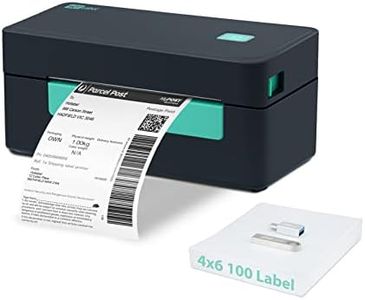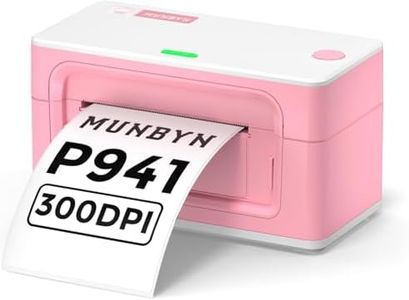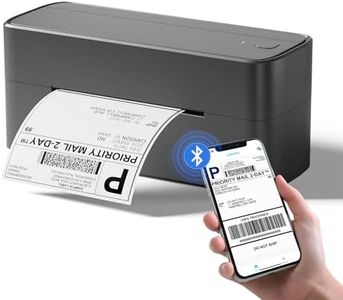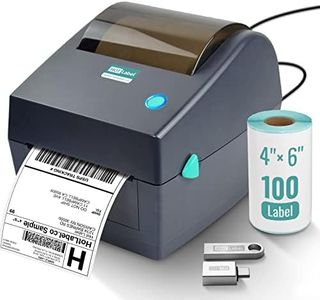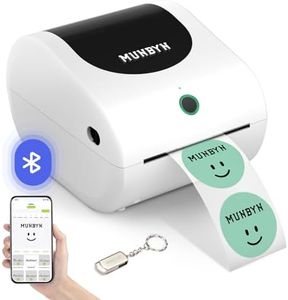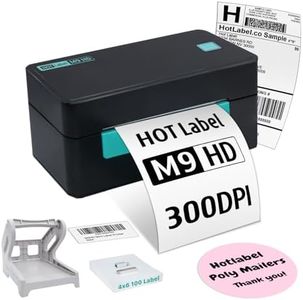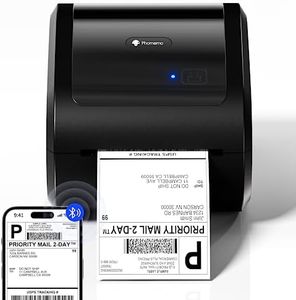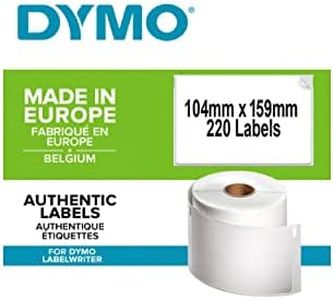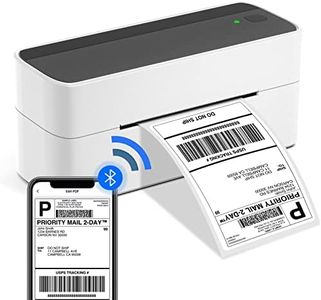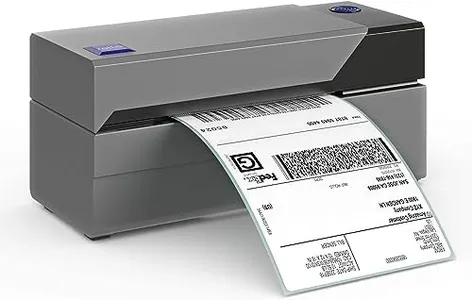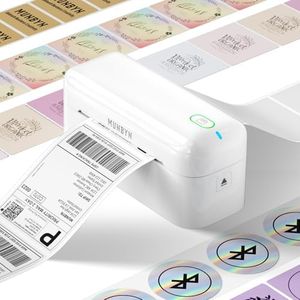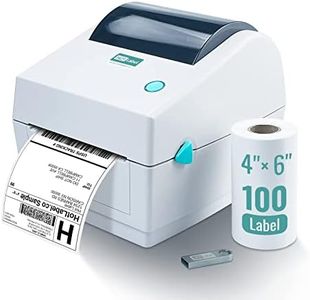We Use CookiesWe use cookies to enhance the security, performance,
functionality and for analytical and promotional activities. By continuing to browse this site you
are agreeing to our privacy policy
10 Best Thermal Shipping Label Printers
From leading brands and best sellers available on the web.Buying Guide for the Best Thermal Shipping Label Printers
Choosing a thermal shipping label printer can make your shipping process much faster and more efficient, whether you run a small business, handle occasional shipments, or need quick labels for organizational purposes. The right printer can save you frustration and wasted materials by producing clear, scannable labels without the need for ink or toner. When making your choice, it's important to understand key specs and how each one fits your shipping habits and setup.Print ResolutionPrint resolution refers to how clear and sharp the printed label looks, usually measured in dots per inch (DPI). Higher resolution means text and barcodes are easier to read and scan, which is especially important if you want labels to look professional or need to print tiny barcodes. Most thermal printers offer between 200 and 300 DPI; 200 DPI is usually fine for basic shipping needs, while 300 DPI is better if you require extra clarity or smaller detailed labels. If your labels are mostly used for scanning and simple information, a lower resolution will suffice, but for branding or small fonts/images, go higher.
Print SpeedPrint speed measures how many labels the printer can produce in a given time, often in inches per second (IPS) or number of labels per minute. Faster printers are handy if you print lots of labels every day, saving you time during busy periods. Slow speeds are sometimes acceptable for occasional use. If you ship dozens or hundreds of packages at once, look for higher print speeds. If you only need a few labels at a time, speed won't be as critical.
Label Size SupportLabel size support tells you the range of label sizes that the printer can handle, which is important because some shipping services or packaging require specific dimensions. Some printers only accept standard 4x6 inch labels, while others can print a variety of sizes for different needs like file folders or barcode stickers. Choose a printer that fits your most common shipping label size, but consider if you need flexibility for different uses in the future.
Connectivity OptionsConnectivity options describe how the printer connects to your computer or devices—USB, Wi-Fi, Bluetooth, or sometimes Ethernet. USB is reliable for a single, close workstation. Wireless options like Wi-Fi or Bluetooth add flexibility by letting you print from multiple devices or locations, ideal if you have a team or want less cable clutter. Pick the simplest connection type that fits your everyday workflow and your usual work area.
CompatibilityCompatibility refers to which operating systems and shipping software or platforms the printer works with. Some are made to easily connect with Windows or Mac computers, others might add support for mobile devices or cloud printing, and many list supported shipping carriers or market platforms. If you use a particular software to generate labels, double-check that your printer will work smoothly with it. Try to match the printer’s compatibilities with the devices and shipping tools you already use.
Durability and Duty CycleDurability and duty cycle indicate how robust the printer is, and how many labels it’s designed to print over a certain period—like daily or monthly volumes. Light-duty models are fine for occasional or home use, while heavy-duty printers are better for business settings with frequent, high-volume printing. Matching the printer’s build and recommended workload to your real needs can help it last longer and stay reliable.
Label Loading and Ease of UseLabel loading and ease of use relate to how simple it is to swap label rolls and operate the printer day to day. Some thermal printers use drop-in labels or self-aligning mechanisms, which can save time when reloading and reduce waste from misprints. If you don’t want to fuss with jams or tricky installs, look for printers with a reputation for straightforward setup and operation.

